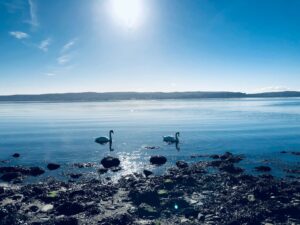Can we give the 25-year environment plan a happy ending?
Nine months ago in this journal I reflected upon what the [then] imminent 25-year environment plan may bring.
At the time we were heading into a snap general election with party manifestos promising a better future, whilst the 25-year plan was left in the wake.
Three political parties pledged greater protection through new legislation to safeguard the environment through Brexit and beyond.
The Liberal Democrats went further by promising to put the Natural Capital Committee (NCC) on a statutory footing, set legally binding natural capital targets, including on biodiversity, clean air and water, and empower the NCC to recommend actions to meet these targets.
So, following the publication of the plan in January, what do we have to look forward to over the next 25 years?
Quite a lot, if the content of the plan is taken at its word. It concludes with a call to arms for a ‘sustained and committed effort’ across the nation to ‘preserve and enhance’ ‘our beautiful green and blue planet, our shared and only home’. Stirring stuff… but make sure it’s a wooden stirrer, not plastic!
I don’t think anyone would argue with the broad aims of the plan: cleaner air and water, thriving wildlife, sustainable use of natural resources, reduced risk from hazards such as flooding, and enhanced natural heritage and wellbeing.
Six policy areas flow from these that are encouragingly wide-reaching in the topics they cover, addressing issues such as woodland planting, biosecurity protection at borders, tackling pollution in deprived areas and addressing the effects of climate change.
The environment plan is underpinned by the natural capital framework set out by the NCC, who were previously mooted as having a central role in delivering the plan. The NCC will still have a hand in developing metrics against which progress will be measured, but governance will now be given to an – as yet undefined – new independent body working to a new set of environmental principles (note, principles, not legislation).
It is this lack of clarity on governance and absence of laws to drive change that may ultimately undermine confidence and the plan’s goals, although I hope not.
It is not possible to condense the 150 pages of the plan here, but it should be viewed in concert with the industrial strategy and the clean growth plan. The environment plan hints at more strategies to follow, including a new chemicals strategy to set out our approach for leaving the EU with a UK alternative to the REACH Regulation… ‘BREACH’ perhaps?
And a clean air strategy due in 2018 to describe how to support clean growth, reduce air pollution and improve public health.
Post-2020 a strategy for nature will also be published to fill the void left by the European Union biodiversity strategy that aimed to halt the loss of biodiversity and ecosystem services in the EU. Other fundamental gaps left by the European exit, on farm payments and commercial fishing, will need to be filled. The plan states proposals for a new environmental land management system will be published ‘later this spring’ in a command paper for consultation with farmers and others. Similarly, consultation on a new fisheries bill is promised.
Net gains
One of the subtler commitments relates to planning and development.
A ‘net environmental gain’ principle seeks to expand current net gain approaches for biodiversity to include wider natural capital benefits, such as recreational spaces, flood protection and improved air quality.
It is not clear yet how this will manifest at local and national levels, but it is a step in the right direction. Wouldn’t it be simpler for small developers to pool resources with other schemes to create bigger and better net gains?
Planning requires more flexibility and a more transparent and strategic approach if it is to incorporate the government’s proposed Nature Recovery Network, which promises to deliver 500,000 hectares of additional wildlife habitat linking existing protected areas and landscapes.
In turn, the network and planned development needs to be considered alongside the planting of 11 million trees and the proposed review of national parks and areas of outstanding natural beauty. Developers, lenders, land owners, planning authorities and conservation agencies will all need to become conversant in natural capital accounting in order to demonstrate and optimise net environmental gain.
Finally, at the World Forum on Natural Capital in November 2017, businesses, financial institutions and conservation agencies agreed that the way to change behaviour and seek action is through storytelling. Even as a practitioner I find the rapid development of natural capital frameworks, tools and initiatives almost overwhelming. However, if the government can demonstrate improvements by capturing the imagination of the public and business, it will go a long way to achieving its goals.
Take the hugely popular Blue Planet II form of storytelling, which brought marine issues into focus, particularly waste plastics.
To back this up, the plan reports that one-fifth of the 718 pieces of plastic litter for every 100m stretch of beach surveyed in the UK by the Marine Conservation Society’s Great British Beach Clean Up came from food and drink.
Consumer habits are changing and the government is launching a call for evidence in 2018 seeking views on how the tax system or charges could reduce the amount of single use plastics waste.
The government reports that water companies, high street retailers, coffee shops and transport hubs who offer new refill stations for people to top-up their water bottles in every major city and town in England will be supported. Also, the water industry will fund the scaling up of an app to enable the public to find their nearest refill station.
Let’s continue the momentum behind public awareness of marine plastics and other issues, as it is incumbent on all of us to give environmental stories a happy ending.












